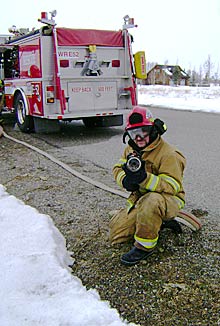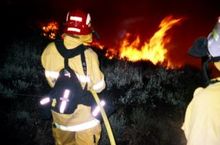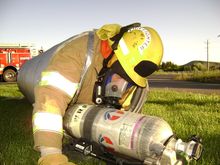|
|
 |
Vehicle fires
U.S. fire departments responded to an estimated 278,000 vehicle fires in the United States during 2006. These fires caused an estimated 490 civilian deaths, 1,200 civilian injuries and $1.3 billion in direct property damage.
Facts and Figures
| • | In 2002-2005, highway-type vehicle fires accounted for 18% of reported fires and 13% of U.S. civilian deaths. | | • | Older teens and young adults are age groups at highest risk of highway vehicle fire death. | | • | On average, 33 highway vehicle fires were reported per hour. These fires killed one person a day. | | • | Cars and other passenger vehicles account for the vast majority of highway vehicle fires and associated losses. In 2002-2005, only 19% of highway vehicle fire actually occurred on highways; 33% occurred on streets, roads or driveways, and 17% were in parking lots. | | • | Three-quarters of highway vehicle fires resulted from mechanical or electrical failures or malfunctions. Collisions or overturns caused only 3% of these fires but 57% of the associated deaths. | | • | One-third of non-fatal highway vehicle fire injuries occurred when civilians attempted to fight the fire themelves. |
Data courtesy NFPA
Vehicle Safety Tips
| • | Have your vehicles inspected at least annually by a trained, professional technician. | | • | Watch for fluid leaks under vehicles, cracked or blistered hoses, or wiring that is loose, has exposed metal or has cracked insulation. Have any of these conditions inspected and repaired as soon as possible. | | • | Be alert to changes in the way your vehicle sounds when running, or to a visible plume of exhaust coming from the tailpipe. A louder than usual exhaust tone, smoke coming from the tailpipe or a backfiring exhaust could mean problems or damage to the high-temperature exhaust and emission control system on the vehicle. Have vehicles inspected and repaired as soon as possible if exhaust or emission control problems are suspected. | | • | Avoid smoking. If you must smoke, use your vehicle ashtray. | | • | Drive according to posted speed limits and other traffic rules. Remain alert to changing road conditions at all times. | | If a fire occurs: | | • | Stop — If possible, pull to the side of the road and turn off the ignition. Pulling to the side makes it possible for everyone to get out of the vehicle safely. Turn off the ignition to shut off the electric current and stop the flow of gasoline. Put the vehicle in park or set the emergency brake; you don't want the vehicle to move after you leave it. Keep the hood closed because more oxygen can make the fire larger. | | • | Get Out — Make sure everyone gets out of the vehicle. Then move at least 100 feet away. Keep traffic in mind and keep everyone together. There is not only danger from the fire, but also from other vehicles moving in the area. | | • | Call for Help — Call 9-1-1 or the emergency number for your local fire department. Firefighters are specially trained to combat vehicle fires. Never return to the vehicle to attempt to fight the fire yourself. Vehicle fires can be tricky, even for firefighters. |
Tips courtesy AAA
|
 |


 |